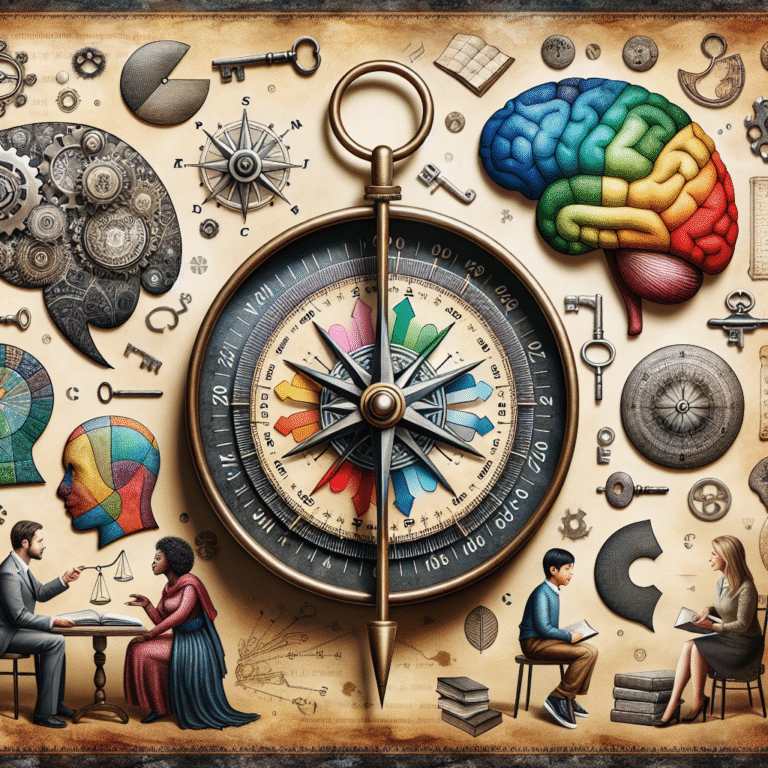
Introduction
Attention-Deficit/Hyperactivity Disorder (ADHD) is often misunderstood, yet it affects millions worldwide. With increasing diagnoses over recent decades, understanding ADHD has never been more vital. This detailed exploration, titled Understanding ADHD: The Latest Research on Developmental Trends, aims to illuminate recent findings, developmental trends, and practical implications for educators, parents, and healthcare providers. By demystifying ADHD through the latest research, we hope to foster a deeper understanding and encourage positive, informed actions within families, schools, and communities.
What is ADHD?
ADHD is a neurodevelopmental disorder characterized by symptoms of inattention, hyperactivity, and impulsivity. These behaviors can manifest differently in individuals, making it essential to recognize the nuanced presentations of ADHD. The disorder often emerges in childhood, but ongoing research underscores that its influence extends well into adulthood. The diagnostic criteria have evolved over the years, reflecting a newfound understanding of its complexity.
ADHD in Children: The Early Signs
Understanding the early developmental trends of ADHD helps in identifying and supporting affected children. Common early signs include:
- Difficulty sustaining attention
- Trouble organizing tasks
- Impulsivity in social situations
Research continues to explore the varying degrees of these symptoms across age groups, shedding light on how ADHD symptoms may change as a child develops.
The Latest Research Findings
Recent studies have significantly enriched our understanding. Key areas of research include genetic influences, brain structure variations, and the role of environmental factors.
Genetic Influences on ADHD
Studies suggest that genetics play a considerable role in the development of ADHD. A meta-analysis in 2022 revealed that heritability estimates for ADHD range from 70% to 90%. This substantial influence indicates that ADHD can often run in families, highlighting the importance of genetic research.
Case Study: The Swedish Twin Study
A landmark study conducted in Sweden examined twins with ADHD, showing that both genetic and environmental factors contribute to its manifestation. The study followed 7,000 twins and found that environmental influences accounted for approximately 30% of the variance, suggesting that intervention strategies may benefit from focusing on both inherited and external factors.
Neuroanatomy of ADHD
Recent neuroimaging studies have showcased structural differences in the brains of individuals with ADHD. Research using MRI technology indicates variations in the prefrontal cortex, which governs attention and impulse control.
Chart: Brain Structures Affected by ADHD
| Brain Region | Typical Function | Common Differences in ADHD |
|---|---|---|
| Prefrontal Cortex | Decision-making, impulse control | Thinner cortical thickness |
| Basal Ganglia | Motor control, reward processing | Altered neural pathways |
| Anterior Cingulate Cortex | Emotion regulation | Reduced activation during tasks |
Understanding these differences reinforces the need for tailored interventions that accommodate unique brain structures in individuals with ADHD.
Developmental Trends
As children grow, the manifestation of ADHD symptoms can evolve. For instance, impulsivity may decline in adulthood, while inattention may persist. Understanding these trends results in better management strategies.
ADHD Across the Lifespan
- Childhood: Symptoms often present as hyperactivity and impulsiveness.
- Adolescence: ADHD symptoms may shift towards inattention and disorganization as responsibilities increase.
- Adulthood: Many adults continue to struggle with focus and task completion, though hyperactivity may diminish.
Real-World Implications for Education
Educators play a crucial role in addressing the challenges faced by students with ADHD. Understanding ADHD allows teachers to implement strategies that enhance concentration and participation.
Case Study: The Classroom Environment
A school district in Illinois implemented a multi-tiered support system for students with ADHD. By restructuring the classroom environment and employing individualized teaching methods, they observed a 40% improvement in academic performance among students with ADHD.
Strategies for Management
Understanding ADHD: The Latest Research on Developmental Trends highlights various management strategies tailored to individual needs. These strategies encompass behavioral interventions, medication, and lifestyle changes.
Behavioral Interventions
Behavioral therapy focuses on modifying specific behaviors through reinforcement strategies. Techniques like positive reinforcement, setting clear expectations, and maintaining structure can enhance focus.
Medication
Stimulant medications like methylphenidate (Ritalin) and amphetamines (Adderall) are often prescribed for ADHD. The latest research supports their efficacy; however, it is crucial for healthcare providers to monitor side effects and adjust dosages accordingly.
Lifestyle Modifications
Incorporating regular exercise, a balanced diet, and mindfulness practices contributes significantly to the overall well-being of individuals with ADHD. Emerging research suggests that dietary interventions, like the elimination of artificial additives, may positively impact symptom management.
Table: Lifestyle Modifications and Their Impact
| Modification | Potential Benefits |
|---|---|
| Regular Exercise | Improved focus and mood |
| Balanced Diet | Enhanced cognitive functioning |
| Mindfulness Practices | Reduced impulsivity |
Conclusion
Understanding ADHD: The Latest Research on Developmental Trends offers critical insights that empower individuals, families, and communities. By embracing the complexity and unique presentation of ADHD, we can move towards enhanced support strategies. The ongoing research contributes to a growing body of knowledge that, when shared, has the potential to change lives. Our takeaway? With understanding and informed action, we can create environments where individuals with ADHD thrive.
FAQs
What are the signs of ADHD in children?
- Signs include difficulty paying attention, excessive talking, interrupting others, and trouble organizing tasks.
Can ADHD be diagnosed in adulthood?
- Yes, ADHD can be diagnosed in adults. Many individuals may not have been diagnosed in childhood.
What treatments are available for ADHD?
- Treatments typically include behavioral therapies, medications, and lifestyle changes.
Is there a genetic component to ADHD?
- Yes, genetics play a significant role in the likelihood of developing ADHD.
- How can educators support students with ADHD?
- Educators can implement structured routines, use positive reinforcement, and create an inclusive environment to assist students with ADHD.
By understanding ADHD through the lens of the latest research on developmental trends, we can advocate for an informed approach to support the unique needs of individuals with this condition. Let’s continue to foster awareness and redirect our efforts toward effective strategies that pave the way for success.

















